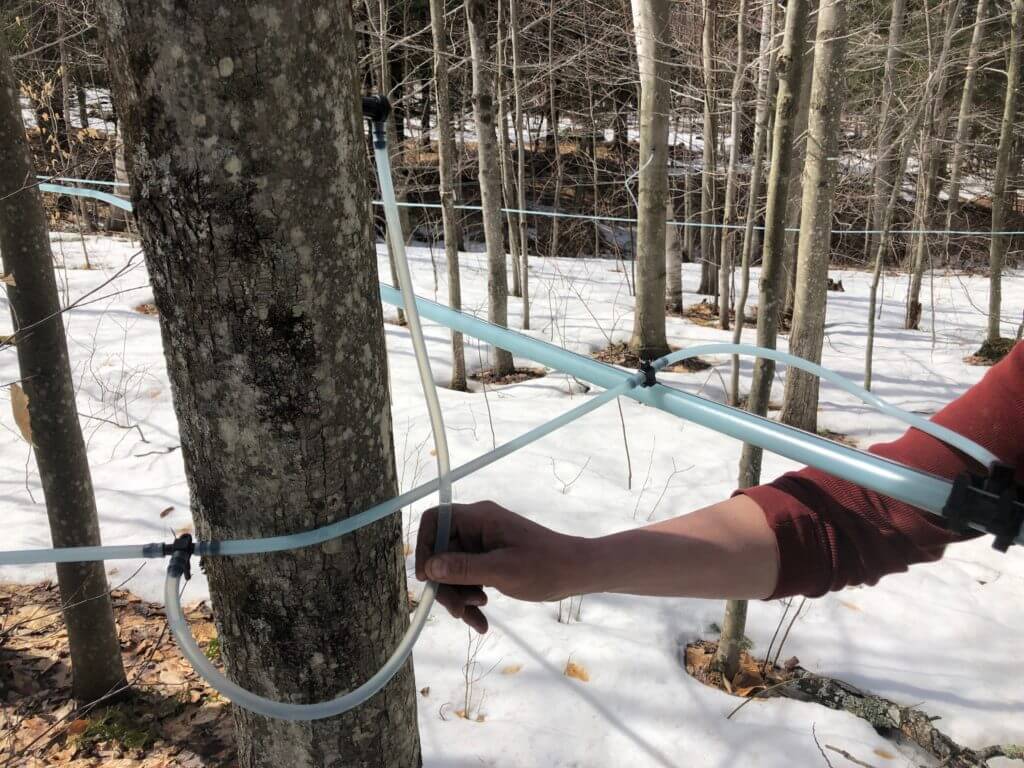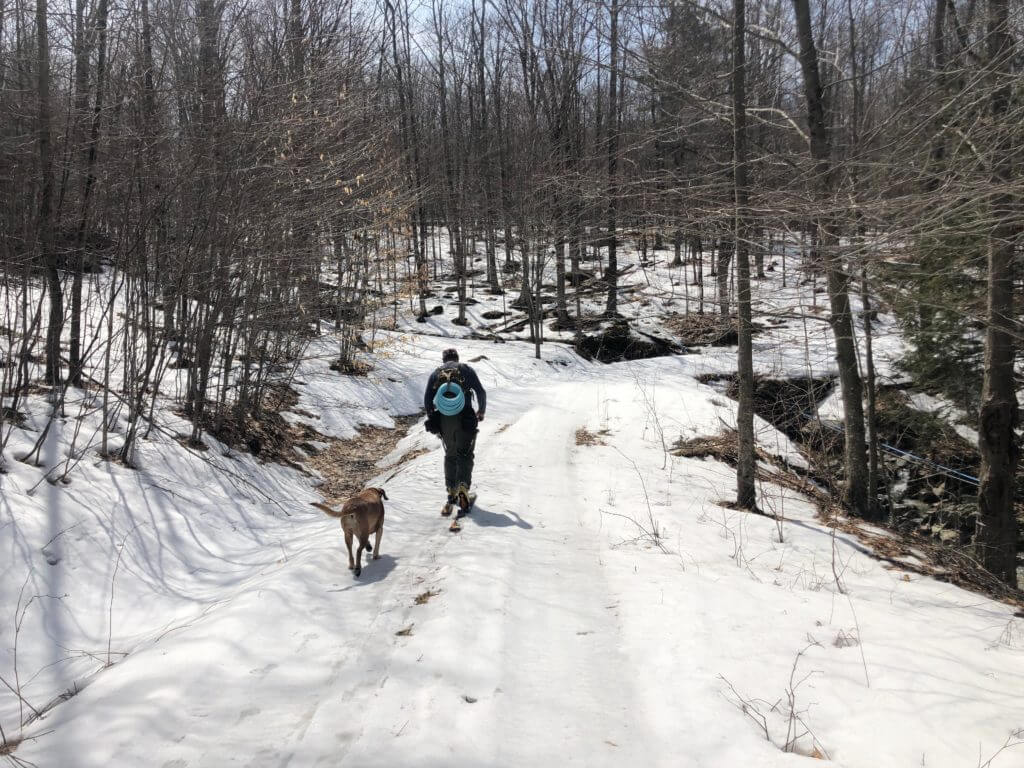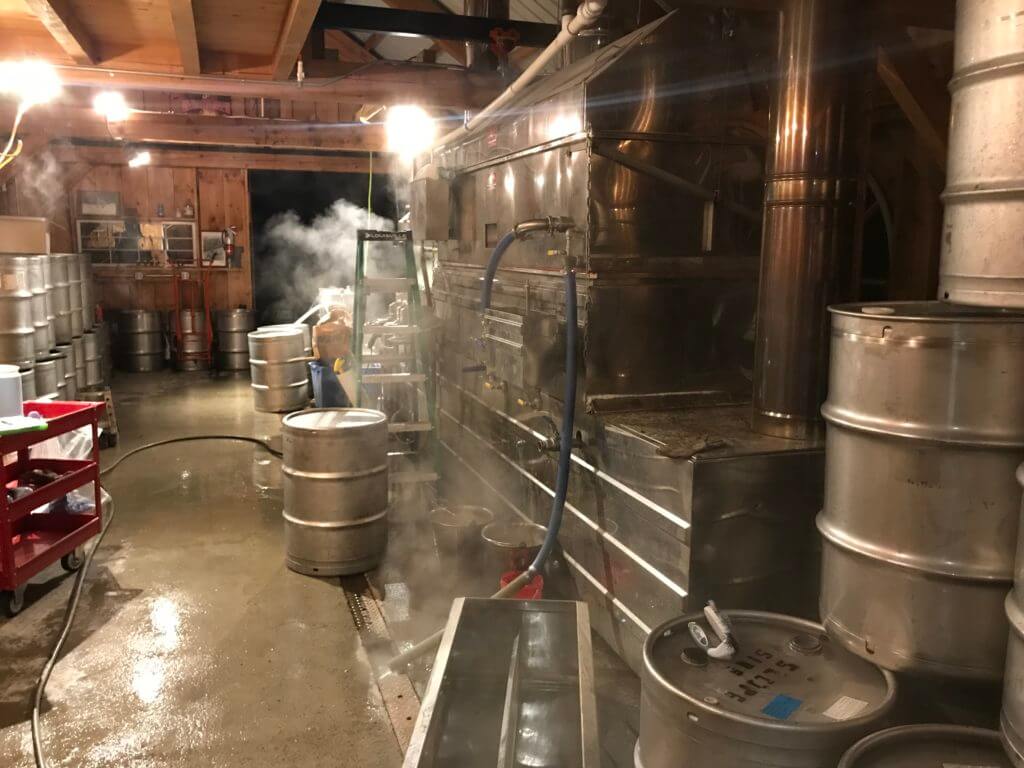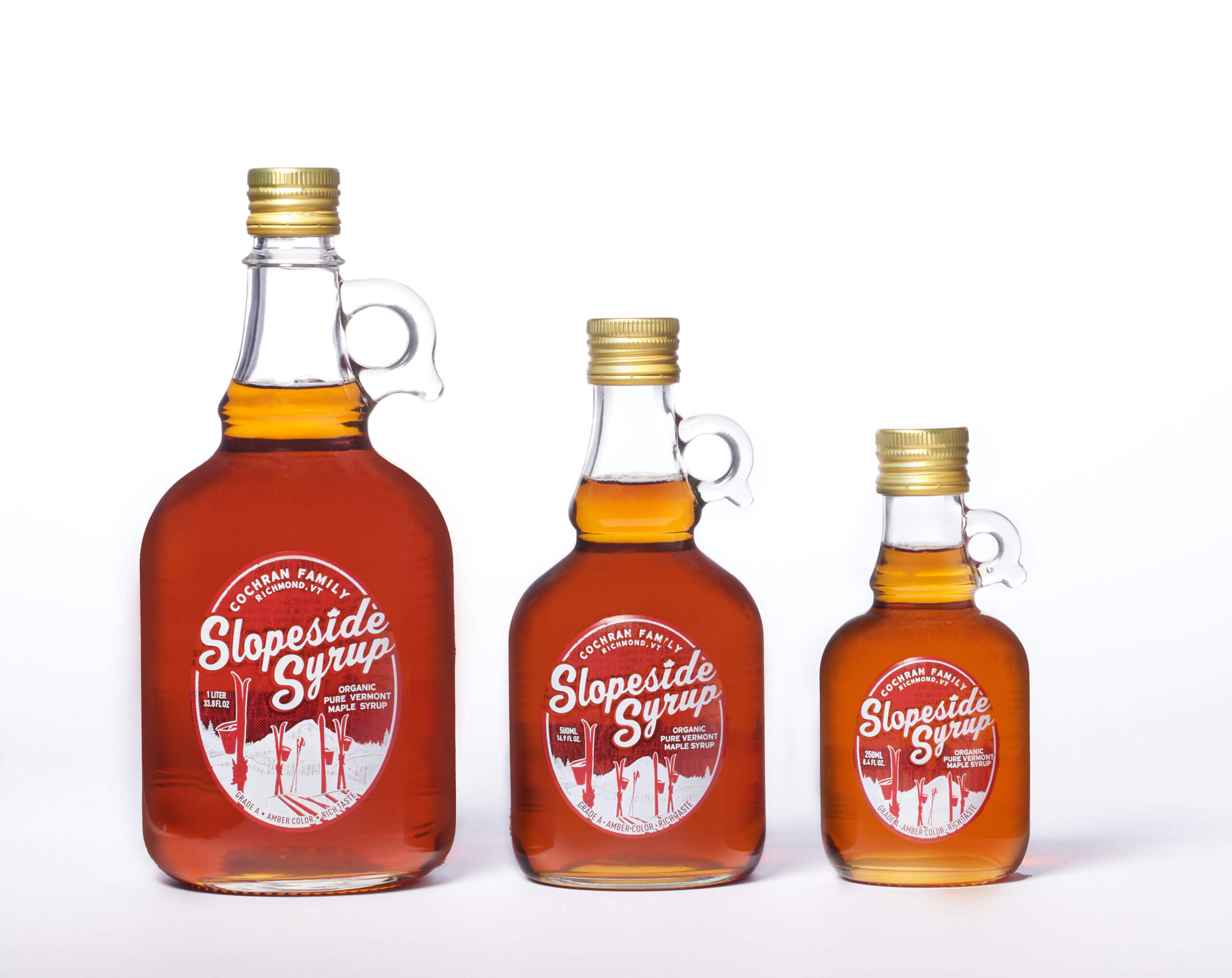We spend a lot of time talking about simple ingredients and all natural energy. Simple, natural products taste great, are high-performance nutrition, are easy to digest, all the while being a bit more environmentally friendly to boot. Nothing underscores that like the cornerstone of our products, pure maple syrup.
Due to the efforts of “big corn syrup” — yes, that is a thing — you could be forgiven for thinking that maple syrup came in a log cabin branded bottle containing a mixture of sugary colors and flavors. On more than one occasion, we have received the earnest request for the ingredient list in original Maple UnTapped: “but what’s in maple syrup?”
Hence, we present a maple sugaring tour, the process by which maple syrup is made. The simplest explanation is that maple sap is collected from maple trees, water is removed from the sap resulting in pure maple syrup. The magic combination of cold nights and warm days that is characteristic of New England in the late winter and early spring is what allows the maple sap to “run” or flow from the trees. It’s much more of a drip… drip… drip… than pouring from a water spout, but with enough trees as part of the whole ecosystem, the sap most certainly flows.

Sugaring starts with tapping. Small holes are drilled, or “tapped” into maple trees. A single person can tap about 400 to 500 trees per day and so on a small operation, that might take a single day or two, but large operations with tens of thousands of taps, it can take weeks of preparation. Exactly when to tap is a trick. Tap too early and the trees heal themselves, isolating and healing the wood around the tap hole, restricting the amount of sap that flows into the system. Tap too late and you risk missing precious warm spring days when the sap flows. There are about 100 species of maple trees, but only four produce enough sugar to be worth tapping and one, the sugar maple, produces most of the sap that becomes syrup.

Galvanized buckets quaintly capturing sap in postcard-ready states of patient collection still exist on small, mom-and-pop maple syrup production sites, but producing on a large scale has met modern times. Translucent polyethylene hoses are strung from tree to tree in a vein-like pattern descending through joints called saddles to a centralized location near the sugar shack, where the production will take place. Vacuum pumps are connected to the system to ensure a steady drip and lines are checked and rechecked to ensure there are no leaks. The first round of removing water from the maple sap occurs when the sap runs through a Reverse Osmosis machine, boosting the sugar content from two to fifteen percent. Finally it is ready for boiling.

The sweetest and most photogenic step in the sugaring process is boiling. After going through the reverse osmosis, sap is pumped into a large stainless evaporator and boiled to 220 degrees F when the sugar content is around 67% sugar (Vermont law sets the Brix of pure maple syrup between 66.9 and 67.5). Too far above 67% and sugar crystals form in the containers. Below 67% and the syrup risks souring while in storage. After it is drawn off, the syrup is filtered and packaged in steel drums for storage, bottling, and packaging.

Repeat
In a good year, the freeze / thaw cycle of spring will bring six weeks of sap “runs” generating anywhere from a third to, in some cases, over half a gallon of syrup per tap. While improvements in technology have improved yields over the last decades, climate change and less predictable winters and springs present challenges and threaten forest health. The sugaring process is not harmful to the trees and maple syrup operations are often doing everything in their power to promote forest health.
Tap pulling
When the buds start to show and temperatures no longer dip to freezing at night, the flavor changes and the sap flow stops. The tired crew cleans the equipment and removes the taps from the trees, allowing a regenerative year before the process kicks off again.
